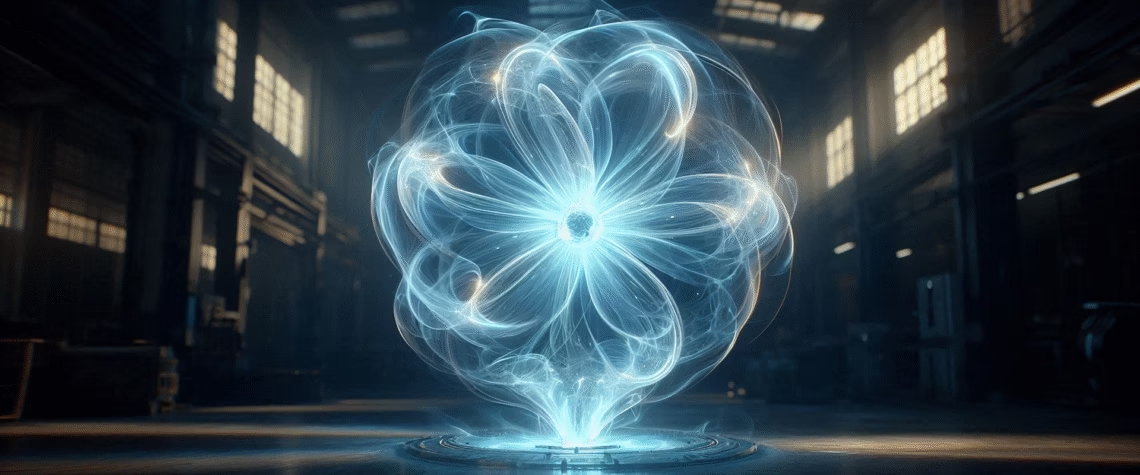It is the perfect parable of humanity waiting for a messiah that never comes…
Humanity has been haunted by the tantalizing prospect of cold fusion for over three decades.
The promise was intoxicating: limitless clean energy, reactors small enough to fit in a garage, and abundant power that would transform civilization.
No more oil wars. No more climate collapse. No more bowing to fossil fuel empires. Just endless light, ripped from the atom.
It was supposed to be our Promethean moment. Instead, however, it became one of the most extraordinary ghost stories in the history of modern science:
Cold Fusion: The Dream, The Deception, and The Unkillable Idea.
The Spark
On a blustery day in March 1989, two renowned chemists, Stanley Pons and Martin Fleischmann, presented their findings to a packed audience at the University of Utah.
Their claim was not modest; it was world-changing. They announced that they had achieved cold fusion in a laboratory — a room-temperature nuclear reaction using a tabletop device.
They promised a future of unlimited, clean energy: a reactor the size of a coffee pot with no radioactive waste, no billion-dollar machines, and no meltdowns.
All that would be needed is a palladium rod, heavy water, and electricity. They said the device produced more energy than it consumed — ‘excess heat’ that could only mean one thing: a nuclear reaction in a glass jar.
Reporters feasted on this story. Politicians saw history in the making. The public saw salvation. However, physics saw blasphemy.
The scientific firestorm
To understand the outrage, you need to know the basics. For fusion to occur, two positively charged nuclei must overcome their immense repulsion, known as the Coulomb barrier.
Stars achieve this through gravity and temperatures of millions of degrees. Humanity’s best attempt requires enormous reactors costing billions.
Pons and Fleischmann claimed to have achieved the same feat at room temperature.
This should have released deadly streams of neutrons and gamma rays — the hallmarks of nuclear fire. Instead, however, there was only ‘excess heat’. Heat without radiation.
In physics, a half-miracle means no miracle at all.
Their claim challenged more than just theory. It violated the structure of the physical world.
The Great Debunking
Rather than ridicule, science responded with replication. MIT, Caltech, the University of Geneva, and dozens of other laboratories raced to test the claim.
One by one, however, they found nothing. There was no excess heat or nuclear signatures: flawed measurements, poor controls, and wishful thinking.
By 1990, it was clear that cold fusion wasn’t real. Pons and Fleischmann weren’t just wrong — their careers were ruined.
Their careers collapsed as fast as their reputations, turning them from rising stars to scientific exiles. Cold fusion became a monument to overreach and a brutal reminder that, in science, replication is king.
The Undead Dream
For most, that was the end. But not for everyone.
A stubborn faction rebranded the field as ‘low-energy nuclear reactions’ (LENR) or ‘condensed matter nuclear science’. New names, old hope.
They held fringe conferences, published niche papers, and whispered of conspiracies. Every few years, a start-up or eccentric billionaire claimed a breakthrough.
In 2019, even Google funded a multimillion-dollar study. The result was always the same: no reproducible evidence or functioning device.
Yet the dream refused to die. Because cold fusion isn’t just science — it’s fantasy. And fantasies resist burial.
The Bitter Lesson
Cold fusion teaches us a harsh truth: science doesn’t bend to hope. It failed not because jealous physicists killed or Big Oil buried it, but because nature doesn’t care about dreams.
Hope is cheap. Evidence is everything.
Instead, cold fusion revealed humanity’s hunger for salvation technology — a miracle cure for scarcity, inequality, pollution, and collapse.
One invention to solve all our problems. This desire is so powerful that it clouds judgment, fuels cults, and makes fantasy seem inevitable.
The Paradox of the Ghost
And yet, even though the field is often the subject of ridicule, it is never abandoned. Scientists openly laugh at cold fusion. But quietly, governments and militaries still fund experiments.
The stakes are simply too high to ignore.
What if, against all odds, it did work? Oil empires would crumble overnight. Pipelines would become obsolete. The foundations of global power would shift in an instant.
It is better to ridicule it as pseudoscience than to risk acknowledging its destabilizing potential.
But perhaps the more straightforward truth is this: cold fusion isn’t suppressed. It’s just a mirage. We perpetuate a dream because our other energy sources are slow, messy, or failing.
Fossil fuels are killing us. Renewables are racing against time. Fusion reactors are always ’30 years away’. Cold fusion remains the fairy tale that is too beautiful to abandon.
The mirror of a mirage.
This is why cold fusion matters, even in failure. It reflects us. Our obsession with shortcuts. Our fear of limits. Our longing for miracles.
It is the perfect parable of humanity waiting for a messiah that never comes while ignoring the truth that salvation will not come from a reactor, but from how we live, consume, and change.
And yet, the haunting question lingers: If cold fusion were real, would we use it to heal the world?
Or would we gorge on infinite fire, burning through the planet twice as fast? History suggests that we know the answer.
Cold fusion is not just science. It is scripture, heresy, and prophecy — a messiah that never comes to life, yet still makes us believe.
Cold fusion is dead. Long live cold fusion!


